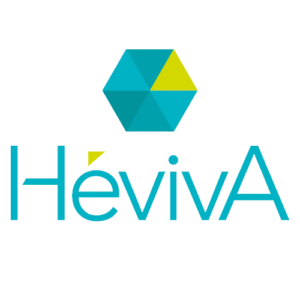How to Use a Blockchain Explorer to Look Up Transactions
To put it simply, block hashes are derived from all of the individual transaction hashes found inside the block. Followed by “Amount,” which reveals the value being sent, displayed in Bitcoin and US Dollar value. Clicking on this will bring up all of the information about the block and every transaction that was included. The “Mined” column displays how long ago the block was officially created. Using this data, they can also tease out a wide range of useful insights — such as determining which tokens are growing or declining in popularity, and identifying newly launched projects.
Here you can view the address information, such as the balance and the Tokens it owns. The Pyrope Chain Explorer (opens in a new tab) allows you to view transactions and wallets on the Pyrope testnet. As users traverse this intricate digital realm, they encounter an exciting opportunity to earn Basic Attention Tokens (BAT) through their xcritical official site interactions with various online content.
- These advanced features enhance the functionality and analytical capabilities of blockchain explorers, providing users with valuable insights into cryptocurrency transactions and activities.
- Clicking on this will bring up all of the information about the block and every transaction that was included.
- The final addition to this list of seven best blockchain explorers brings us to Blocktrail.
- Discussions on the best blockchain explorers in the world would obviously arrive at Blockchair at some of the other points.
Here’s how to find a more detailed overview of the gas market of your selected chain. Looking up a specific transaction is just as simple as searching xcritical website for an address. Build your identity as a certified blockchain expert with 101 Blockchains’ Blockchain Certifications designed to provide enhanced career prospects.
The user, via the explorer’s search bar, sends queries to the software, which, in turn, queries the nodes of the blockchain, looking for the requested information. An answer is then provided to the block explorer which, thanks to APIs, interprets the data and returns it to the user through a graphic or numerical representation. However, all explorers should display a feed of the latest activity on the network. They should be able to search for transactions, blocks and addresses with ease. It allows users to export all transaction history related to a public address in the format of a CSV file. Furthermore, it also offers an easily comprehensible pictorial representation of transaction history for a specific address.
Find Trending Tokens
In addition, you could also verify if participants have added any amusing text in the blockchain. Furthermore, the formidable decentralized app explorer helps users in exploring blockchain applications easily. Since it has to deal with excessive volumes of data, users can expect slower loading speeds with Tokenview.
These tools act as windows into the blockchain, providing clarity and transparency that are essential in this digital age. For Bitcoin, some of the biggest explorers besides the aforementioned come from Blockcypher and Bitcoin.com. These sites don’t offer as much in the way of advanced analytics, but do offer the basic abilities to search blocks, addresses and transactions. As previously mentioned, many services offer multiple explorers, and this is the case for all three websites already brought up. Bitcoin.com has explorers for both Bitcoin and Bitcoin Cash, and blockchain.com offers both of these plus Ethereum. Blockcypher goes even further and offers data for Bitcoin, Litecoin, Dogecoin, and Dash.
Step 2: Search for the address
Finally, the journey culminates at the Front-end Display, where all the processed information comes to life for user interaction. Utilising advanced frameworks, it presents dynamic data in a visually engaging manner, allowing users to explore and navigate through blockchain information effortlessly. Instead of digging through various platforms or wallets, simply head over to a block explorer. By inputting your wallet address, you can effortlessly see your current holdings, making it easy to stay updated on your financial landscape. Now, imagine you’re on the other side of the transaction, eagerly anticipating a payment from a colleague for a freelance project. You can harness the power of a block explorer to track the status of that incoming cryptocurrency.
Once the block is created, it is added to the chain and propagated to other nodes in the network. They provide transparency and immutability to the network, which is essential for the adoption and growth of cryptocurrencies like Bitcoin (BTC). A distributed ledger consists of multiple nodes, or computers, that maintain a copy of the entire transaction history. Each node in the network has a copy of the ledger, ensuring that the data is decentralized and secure. Explorers connect to these nodes and retrieve the data to present it in a user-friendly format.
Is Ledger Stax the Best Hardware Wallet?
This server generates web pages that enable users to input queries and interact with the explorer’s functionalities. Before embarking on an investment journey with a new cryptocurrency or token, it’s wise to conduct thorough research. A block explorer can serve as your guide, revealing the token’s historical performance, total supply, and distribution among holders. This knowledge empowers you to make informed decisions and navigate the sometimes treacherous waters of investment. We will find these terms referenced in the interfaces of the respective blockchain explorers, the use of which we will explain in the following paragraphs.
“Height” is pretty straightforward, and refers to the actual block number counting from the very first, or, “genesis” block. “Hash” is the number that must be resolved in order for the block to be mined. Get monthly Blockchain News.On top, you’ll get our free Blockchain beginners course. By following these best practices, you can enhance the security of your Explorer usage and protect your personal information and cryptocurrency holdings.
Initially, a blockchain explorer might have looked like a simple site, but now that we understand what it is and how it works, we can realise its great potential. On this model, in fact, companies dedicated to advanced blockchain analysis have sprung up in recent years. This is ultimately due to the inherent differences in the blockchain design. While they are all fundamentally similar, there are some slight differences.
Explore Blockchain Search Address for Developers
By using an explorer to track Bitcoin transactions, you can ensure the transparency and security of your transactions on the Bitcoin network. Tron users can turn to Tronscan and TRON Grid for their exploration needs, while those on Polygon (Matic) can rely on Polygonscan and Mati c.network Explorer to track their transactions. Avalanche enthusiasts can utilise platforms like Snowtrace and Avascan, whereas Cardano supporters can find solace in Cardanoscan and Explorer. It meticulously parses through the raw data provided by the entire node, extracting valuable insights and organising them into a structured format. The processed data is then safely housed within either a relational or NoSQL database, allowing for efficient retrieval and management.
Bitcoin’s maximum block size is 1MB, but sometimes it can be bigger due to Segwit. By utilizing a blockchain explorer, you can effectively monitor the transactions and activities of Ethereum and other altcoins on their respective networks. By following these steps, you can effectively use blockchain explorers to explore and understand the world of cryptocurrencies. The heart of this system is the Database, where the organised blockchain data is arranged into easily searchable tables. This meticulous organisation ensures that queries can be answered swiftly, providing users with rapid access to the information they seek. In the intricate world of a blockchain explorer, the journey begins with the user’s input.
Bitcoin
Any major project should have a corresponding block explorer that works much the same. That’s why BeInCrypto has created a handy guide to what these explorers are, how to use them and where to find them. Besides a list of transactions, most block explorers will also provide further details on the block parameters — such as its height, size, difficulty, and gas limit — should this information be of concern. On a final note, it is clearly evident that you have various options when it comes to the best blockchain explorer.
So, whether you’re a seasoned crypto enthusiast or a curious newcomer, this invaluable resource offers you the opportunity to engage with and appreciate the fascinating intricacies of blockchain technology. A block explorer is basically a web interface for searching the blockchain of a cryptocurrency. As the blockchain ecosystem expands and matures, explorers will become even more sophisticated and user-friendly. They will continue to provide valuable insights and data analysis tools to individuals, businesses, and researchers, enabling them to explore and understand the network. XRP Ledger Explorer is specifically designed for the Ripple cryptocurrency. It allows users to explore the XRP Ledger, view transaction details, and track addresses.
If you would like a more comprehensive list of options, there are sites like Blockchair and CryptoID which have compiled larger collections of explorers across many projects. The format is very clean and clear, but the site is a bit lacking on analytics, outside of miner distribution. “Difficulty” charts how hard it is for a new block to be mined and it is tied to “Hashrate,” which is basically the sum of the computing power being https://xcritical.online/ employed to run the network. Build your blockchain app faster with a unified Javascript framework for 65+ blockchain protocols.
Blockchain explorers work by connecting to nodes in the network and retrieving data from the distributed ledger. When a user performs a search or query on a blockchain explorer, the explorer sends a request to multiple nodes to retrieve the relevant information. One of the main roles of these explorers is to enable users to verify transactions. By entering a transaction ID or address into an explorer, users can view the details of the transaction, including the sender, recipient, and amount transferred. In the context of cryptocurrencies like Bitcoin, an explorer allows users to view the entire transaction history of the Bitcoin network.
An added bonus for Etherscan is that you can in fact search just for specific ERC-20 and ERC-721 tokens, instead of having to sift through the entire network for those transactions. Block rewards are given to miners, who play a fundamental role in the blockchain ecosystem. Using mining hardware and software, miners compete with each other to be the first to solve cryptographic puzzles and produce Proof-of-Work. In this process, they also verify transactions to ensure that the BTC hasn’t been spent elsewhere. The miner who correctly solves the equation first receives the block reward, along with the transaction fees. If you hover your cursor over each block, its block number, along with the number of transactions confirmed within that block, will appear.




Laisser un commentaire
Rejoindre la discussion?N’hésitez pas à contribuer !